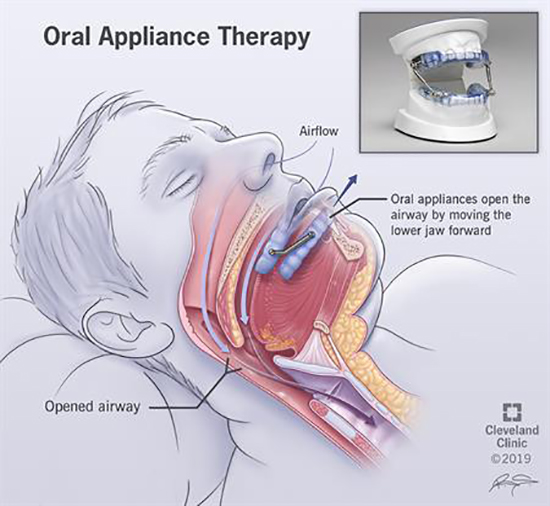Snoring/Sleep Apnea
TMD and OSA should not be treated as isolated conditions. 75% of people with TMD have OSA as the cause of their joint dysfunction. 52% of OSA patients have TMD. It is very important to assess your condition thoroughly for your treatment to be successful.
About 40 percent of adult men and 24 percent of adult women are habitual snorers.
Snoring and sleep apnea are caused by narrowing of your upper airway while you sleep. Narrowing of the airway may cause vibration, which results in snoring. If the airway collapses, you stop breathing. This is called apnea. Every time this happens during the night your body struggles to get oxygen and you wake up to start breathing again.

This can affect your health and quality of life. The adverse effects of apnea are contributing factors to daytime sleepiness, high blood pressure, arrhythmias, heart attack, stroke, diabetes, erectile dysfunction, and depression. Many motor vehicle accidents are attributed to day time sleepiness as a result of sleep apnea.
Approximately 3-7% of men and2-5% of women have sleep apnea.
Approximately 3-7% of men and2-5% of women have sleep apnea.
Apnea can only be diagnosed with a sleep study, which will measure your breathing, heart rate, oxygen saturation level in your blood, muscle activity, as well as other functions. These appliances can also reduce stresses on the jaw joints and muscles
An appliance can also be worn to improve the effectiveness of CPAP. There are many different designs of oral appliances, such as Somnomed, TAP, Silencer, Herbst, Klearway, EMA, Tongue retaining devices, Silencer, etc. An appliance will be selected for you that best meets your needs.
We also offer a diagnosis from a sleep physician and assess the effectiveness of the appliance with a home test.